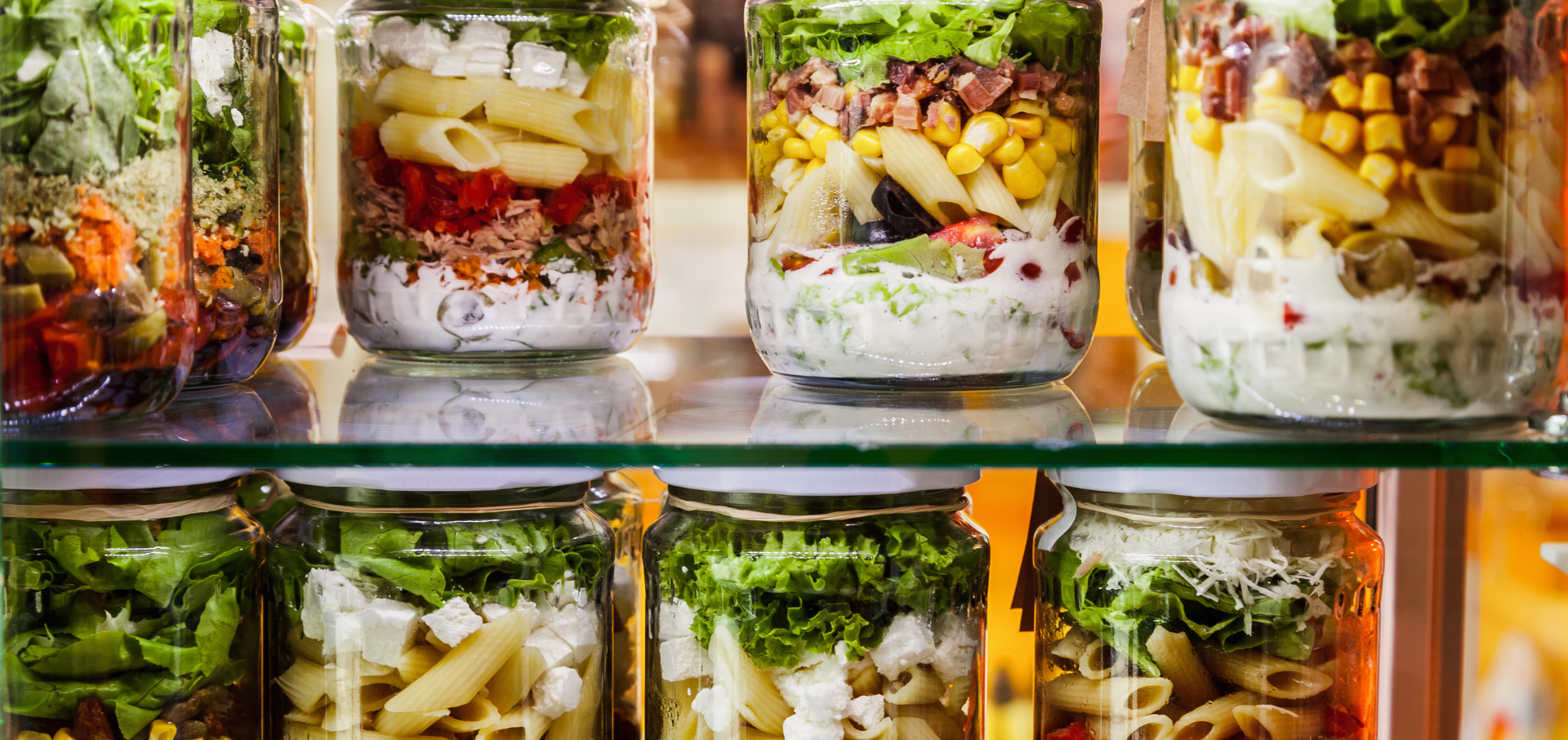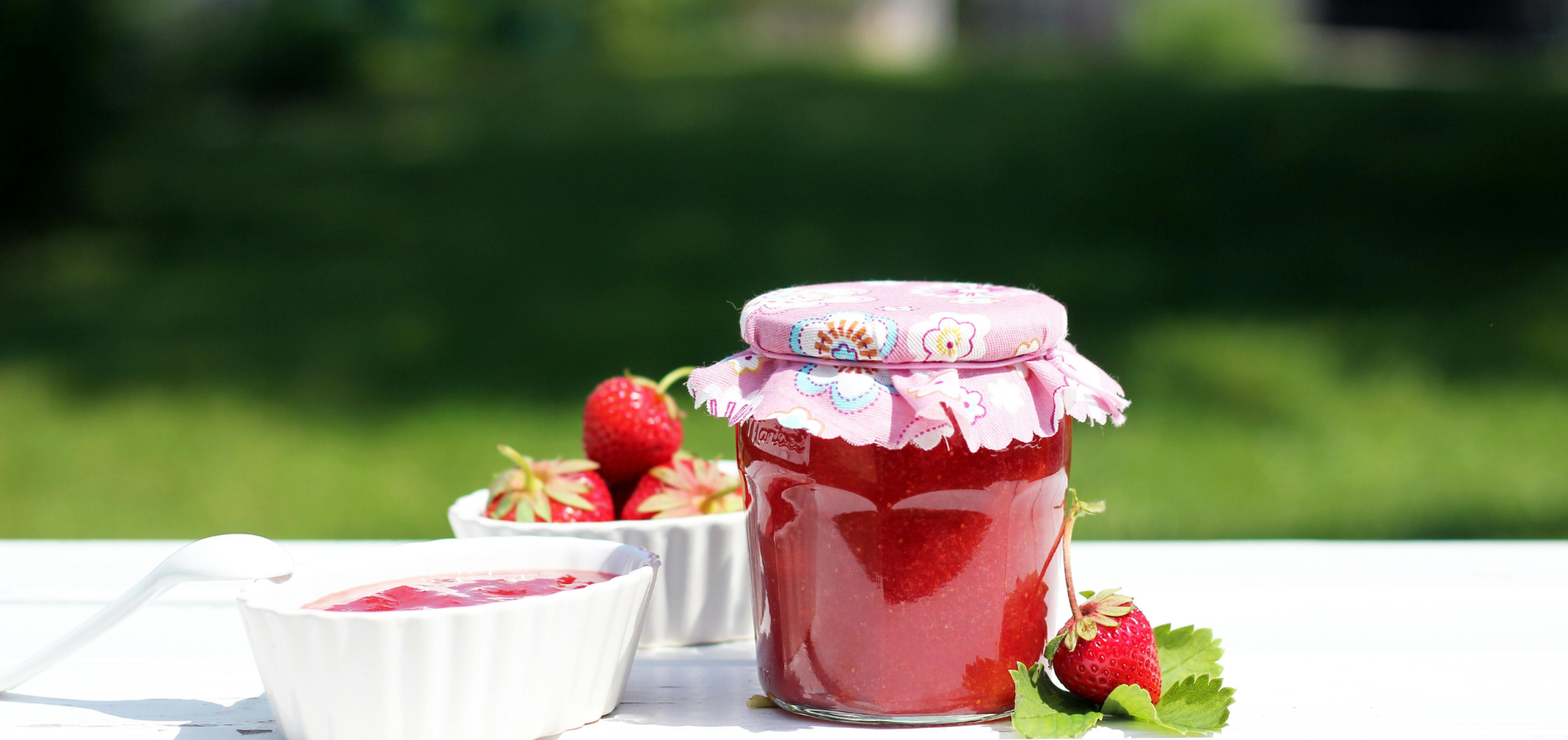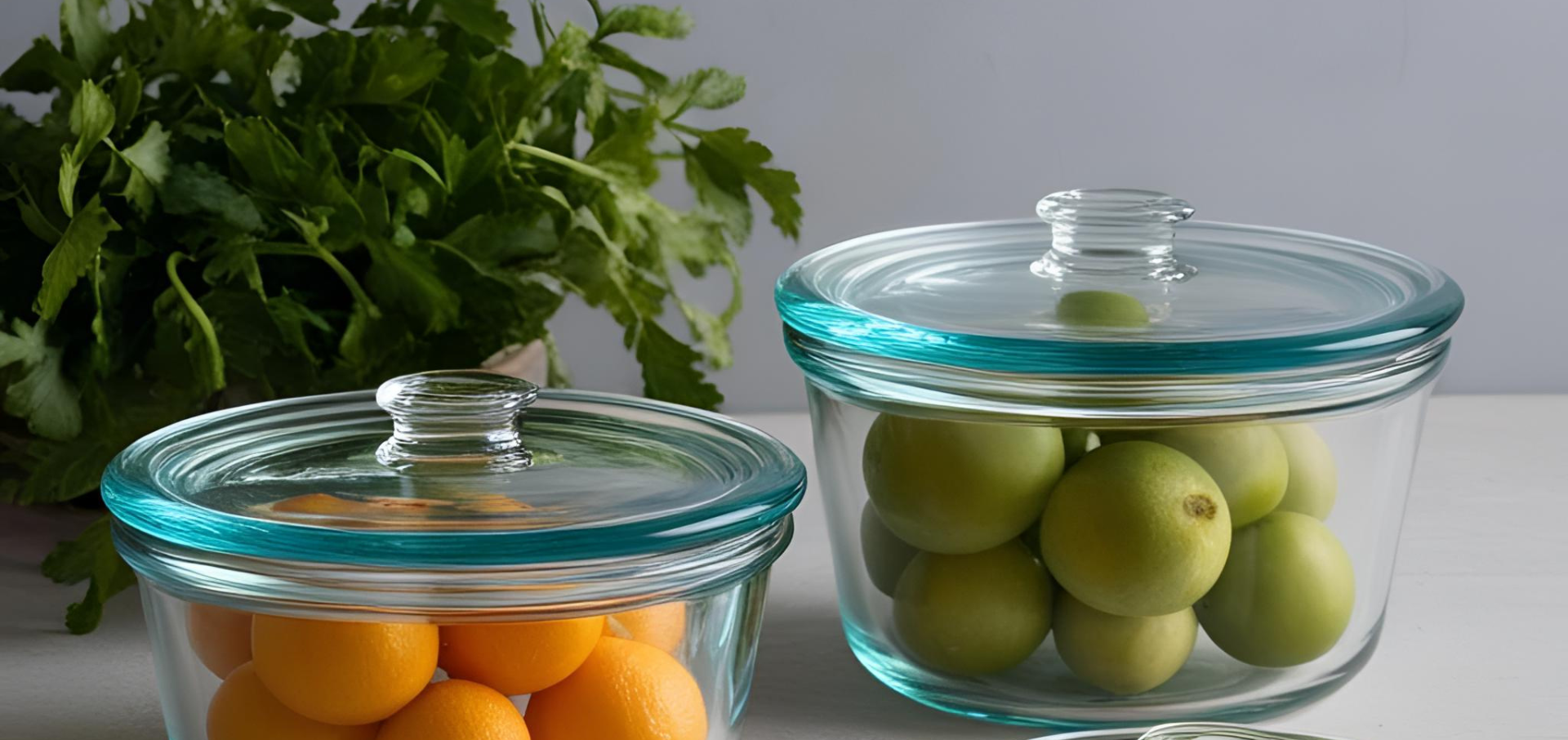Finding reliable food storage can be frustrating when plastic containers stain, warp, or potentially leach chemicals into your food. These concerns become more pressing when trying to maintain a healthy lifestyle while reducing waste.
Many households struggle with mismatched, deteriorating containers that fail to keep food fresh.
Glass food containers offer a compelling alternative that addresses these problems while providing additional benefits for kitchen organization and food preservation.
But are they really worth the switch—and which type is best for your needs? Let’s break it down.
What Makes Glass Food Containers Different from Plastic Options?

Glass food containers stand apart from plastic in several significant ways. Unlike plastic, glass is non-porous and doesn't absorb food odors, flavors, or stains. This non-reactive nature means your tomato sauce won't permanently tint your containers, and yesterday's curry won't flavor tomorrow's oatmeal.
The molecular structure of glass creates an impermeable barrier that prevents chemicals from migrating into food, a common concern with some plastic containers. Research shows certain plastics can release compounds into food when heated or used with acidic ingredients.
Glass maintains its clarity over time, without developing the cloudy finish that many plastics acquire after multiple washings. This durability translates to a longer useful life, reducing the need for frequent replacements.
Is Glass Food Safe?
Yes, glass food containers are extremely safe for food storage. Glass is made primarily from naturally occurring ingredients like sand, soda ash, and limestone transformed into an inert material. This non-reactive nature is why glass has been trusted for centuries.
The primary safety advantages include:
No chemical leaching - Glass doesn't contain BPA, BPS, phthalates, or other chemicals found in some plastics
Temperature stability - Quality heat resistant jars can withstand significant temperature changes without breaking down
Sanitization capabilities - Glass can be fully sanitized at high temperatures
A 2023 report by the American Chemical Society highlighted that plastic containers can release micro- and nanoplastics even without heating, raising health concerns.
Is Glass FDA Approved for Food Storage?
Yes, glass is FDA approved as a safe material for food contact applications. The Food and Drug Administration classifies glass as "Generally Recognized As Safe" (GRAS). Glass containers manufactured for food storage must comply with FDA regulations under 21 CFR 177, which governs materials intended for food contact.
This regulatory oversight provides assurance that properly manufactured glass food containers meet strict safety standards for storing everything from acidic tomato sauces to alkaline foods like beans.
Key Benefits of Using Glass Food Containers with Lids

Glass food containers with lids offer numerous practical advantages beyond basic storage. The combination of glass construction with properly designed lids creates a versatile system suitable for diverse kitchen needs.
Superior Preservation of Food Quality
Glass containers preserve food flavor, freshness, and nutritional quality more effectively than many alternatives. The non-porous surface prevents air exchange that leads to oxidation and spoilage. Studies show properly sealed glass containers can extend refrigerated produce shelf life by 2-3 days compared to plastic.
Airtight glass jars with quality gaskets create a superior seal that locks in freshness while keeping out moisture and odors. This seal integrity makes them particularly effective for storing aromatic foods without transferring scents.
Versatility Across Temperature Ranges
Quality glass food containers transition seamlessly between different environments:
• Freezer storage - Glass withstands freezing without becoming brittle
• Refrigerator organization - Clear glass allows easy identification of contents
• Oven use - Tempered glass containers can go from refrigerator to oven (without lids)
• Microwave reheating - Glass heats evenly without hot spots
Wide mouth jars and containers with straight sides are particularly useful for freezing, allowing for food expansion while making defrosted contents easy to remove.
Visual Inventory Management
The transparency of glass creates a practical advantage for organization. Being able to see contents at a glance helps:
• Reduce food waste by improving awareness of available items
• Simplify meal planning based on visible ingredients
• Track freshness without opening containers
A survey found that households using transparent storage containers reported approximately 23% less food waste due to improved visibility.
Is It Good to Store Food in Glass Containers?
Yes, storing food in glass containers offers significant practical benefits for most households. The advantages extend beyond safety to include practical considerations that impact daily kitchen efficiency.
Extended Food Freshness
Glass provides an exceptional barrier against air and moisture—two primary factors in food deterioration. For dry goods storage, glass containers prevent humidity absorption that can lead to staleness in items like:
• Grains and cereals
• Baking ingredients
• Nuts and seeds
• Dried herbs and spices
Chemical-Free Food Storage
Unlike some plastic alternatives, glass doesn't contain chemicals that might migrate into food during storage. This becomes particularly important when storing:
• Acidic foods (tomatoes, citrus, vinegar-based items)
• Fatty foods (oils, butter, cheese)
• Items requiring long-term storage
A 2024 study found that over 3,600 chemicals used in food packaging are present in human bodies, with some, including BPA and phthalates, linked to health concerns .
Sustainable Kitchen Management
Glass containers support more sustainable kitchen practices through:
1. Longevity - Quality glass containers often last decades with proper care
2. Recyclability - Glass is 100% recyclable without quality degradation
3. Reduced waste - Durable containers eliminate disposable storage needs
4. Multi-functionality - The same container can move from storage to table
The average glass food container has a useful life 4-6 times longer than standard plastic alternatives.
What Are the Disadvantages of Glass Containers

While glass containers offer numerous benefits, they do have certain limitations that should be considered when making purchasing decisions.
Weight and Breakability Concerns
The most obvious disadvantage is weight and potential fragility. Glass containers typically weigh 2-3 times more than plastic equivalents, which can be a consideration for:
• Lunch containers transported daily
• Homes with young children
• Individuals with grip or strength limitations
The breakability factor can be mitigated by selecting tempered glass options, which are designed to resist breakage and, if shattered, break into small granular pieces rather than sharp shards.
Cost Considerations
Quality glass food containers generally require a higher initial investment than plastic options. However, this cost difference should be evaluated in terms of:
• Longer useful life (often 5+ years versus 1-2 years for plastic)
• Reduced replacement frequency
• Multi-functionality across cooking and storage needs
A cost-per-use analysis suggests that glass containers become more economical after approximately 15-18 months of regular use.
Space Requirements
Glass containers don't nest as compactly as some flexible plastic options when empty. This limitation can be addressed by:
• Selecting containers designed with stacking features
• Choosing sets with interlocking lids
• Opting for rectangular shapes that maximize space efficiency
How to Choose the Right Glass Food Containers
Selecting the optimal glass storage system requires considering several factors that align with your specific kitchen habits.
Evaluate Your Primary Storage Purposes
Begin by identifying your most common food storage scenarios:
Meal prep - Rectangular containers with dividers work well
Leftover storage - Medium, shallow containers optimize refrigerator space
Pantry organization - Containers with wide openings simplify bulk ingredient access
Freezer meals - Containers with straight sides allow for expansion
For households that frequently store and reheat leftovers, investing in containers that transition safely from freezer to oven offers significant convenience.
Lid Design and Functionality
The lid system significantly impacts performance. Consider these characteristics:
Sealing mechanism - Silicone gaskets provide superior airtight performance
Material composition - Silicone, BPA-free plastic, or glass options
Vent features - Some lids include steam vents for microwave reheating
Lock-down clasps - These provide additional security for liquids
containers with silicone gasket seals maintained freshness up to 40% longer than those with basic snap-on plastic lids.
Smart Ways to Maintain Glass Food Containers

Proper care significantly extends the useful life of glass storage containers, maximizing your investment.
Proper Cleaning Techniques
Glass containers benefit from specific cleaning approaches:
1. Allow temperature normalization before washing to prevent thermal shock
2. Hand wash lids with gaskets to preserve seal integrity
3. Use baking soda paste for stubborn stains
4. Avoid abrasive scouring pads that can etch glass over time
Preventing Common Damage
Several practices significantly reduce the risk of damage:
• Avoid rapid temperature changes that can cause thermal stress fractures
• Leave space between stacked containers to prevent accidental impacts
• Store lids separately or loosely attached to prevent gasket compression
• Use appropriate containers for freezing - straight sides accommodate expansion
Research indicates that most glass container breakage occurs due to impact against hard surfaces rather than temperature changes.
Transitioning to Glass Storage
Begin your transition by replacing containers used for these high-priority applications:
1. Acidic food storage (tomato sauces, citrus)
2. Microwave reheating containers used frequently
3. Long-term storage containers for pantry items
Develop a collection that meets diverse needs without unnecessary duplication:
• Start with a core set of 3-4 different sizes covering common storage needs
• Add specialized pieces as needed
• Consider container systems with interchangeable lids
The Smart Storage Choice
Glass food containers represent a practical, safe, and environmentally responsible choice for most household storage needs. Their versatility, from freezer to oven use, combined with their non-reactive properties, makes them particularly valuable for health-conscious households concerned about chemical exposure.
While the initial investment exceeds that of plastic alternatives, the extended useful life and multi-functionality of glass typically deliver greater value over time.
By selecting appropriate containers for your specific needs and following proper care guidelines, you can create an efficient storage system that enhances your kitchen's functionality while potentially contributing to better food preservation and reduced waste.
Make the smart choice for your kitchen with glass food containers. Explore our collection of food jars and bottles, designed to preserve freshness, reduce waste, and keep your food safe.